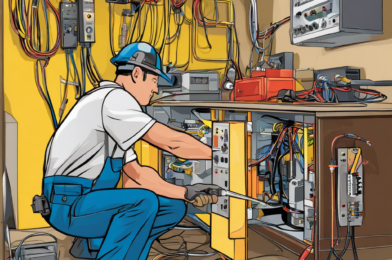The world of smart home technology can be daunting, but creating a modern living space doesn’t have to be complicated. With just a few simple tech upgrades, you can turn your home into a sleek, efficient, and connected haven. So, where to begin?
First things first, assess your needs and priorities. Do you want to focus on convenience, energy efficiency, or entertainment? Perhaps you want a comprehensive system that integrates all of the above. Prioritizing your needs will help guide your choices and ensure you create a smart home that aligns with your lifestyle.
Let’s start with the basics: lighting. Smart lighting systems offer remote control and automation capabilities, allowing you to adjust the ambiance and brightness of your home with a tap on your phone or a voice command. You can also set schedules to turn lights on and off at specific times, simulating presence when you’re away and saving energy.
Another essential upgrade is a smart thermostat. These devices learn your habits and preferences, automatically adjusting the temperature to keep you comfortable while minimizing energy waste. Many also provide energy usage reports, helping you make informed choices to reduce your carbon footprint.
Then there’s the entertainment factor. Upgrading your audio and visual systems can transform your home into a theater-like experience. Imagine controlling your music and podcasts with your voice, or streaming your favorite shows and movies to any room in the house.
Security is also a key consideration. Smart security systems offer peace of mind, allowing you to monitor your home remotely and receive alerts if anything is amiss. You can also control smart locks and garage doors from anywhere, ensuring your home is secure even when you’re not there.
To tie it all together, consider a smart home hub or voice assistant. These act as a central command for all your connected devices, allowing for seamless integration and providing you with a single interface to control your entire smart home ecosystem.
Remember, when choosing smart home devices, compatibility and ease of use are key. Opt for well-known brands that offer broad compatibility, and always read reviews to ensure the devices will meet your expectations.
Finally, don’t be intimidated by the setup process. Many smart home devices are designed for easy DIY installation, and with a bit of planning, you can create a modern living space that’s both impressive and intuitive. Happy upgrading!









